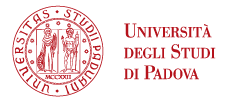Exiles and Refugees: The Intellectual Migration from Fascist ltaly (1920s-1940s)
General Research Area VIOLENCE
Project type INDIVIDUAL RESEARCH GRANT
Funding UNIVERSITY FUNDING
Data avvio: 1 January 2015
Data termine: 1 January 2017
Coordinatore: Carlo Fumian
Abstract:
«A refugee used to be a person driven to seek refuge because of some act committed or some political opinion held», writes Hannah Arnedt in the first lines of her 1943 essay We Refugees, adding right after: «Well, it is true we have had to seek refuge; but we committed no acts and most of us never dreamt of having any radical political opinion». This is true both for the German and Italian scholars who fled their homes and made their way to the United States after the establishment of the Fascist and Nazi regimes in their countries (Marrus 2002; Rose 2005).
Yet, in the case of Italy, contemporary scholars have often overlooked this fact by only focusing on the exile of the fuorusciti - as the Italian political exiles called themselves - and the biography of the most illustrious ones, such as Gaetano Salvemini, Carlo Sforza, and Luigi Sturzo (Killinger 2005; Camurri 2010). Most of the fuorusciti expatriated in the 1920s and early 1930s, settled mainly in or around the New York and Boston areas, and brought a clearly defined anti-Fascist agenda that they shared with cohorts in France, Switzerland, and elsewhere. They lived in the United States, but their minds were still in Europe. After the end of Second World War, most of them returned to Italy. The story of the Italian Jewish refugees in the United States was very different. Their exile started immediately after the enactment of the anti-Semitic laws by the Fascist government in 1938. They were not or not necessarily anti-Fascist. Among them, there were hundreds of intellectuals: scholars, scientists, writers, musicians. The names of the more successful ones are well known both in Italy and in the United States: Mario Castelnuovo Tedesco, Giorgio de Santillana, Giorgio Levi Della Vida, Roberto S. Lopez, Leonardo Olschki, Alessandro Pekelis, Bruno B. Rossi, Emilio Segrè, Edoardo Weiss, and Bruno Zevi. However distinguished they may have been in Italy, their flight across the Atlantic turned them into uprooted individuals who had to adjust to a new environment, learn a new language, and find suitable positions in their adopted country. In most cases, their exile was without return. According to Giuseppe A. Borgese, the fuorusciti left Italy because they did not want Fascism, while Jewish refugees left Italy because Fascism did not want them.
By focusing both on the macro and the micro dimensions of this migration, this project intends to discuss exactly the connections and differences between the political exile of the fuorusciti and that of the Italian Jewish scholars. The proposed research will address two main aspects of this intellectual migration. The first deals with its institutional dimension and consists of a study of the phases and modalities of displacements, the US immigration policies, the role played by European and American institutions, and the processes of assimilation, integration or exclusion. Particular attention will be given to how democratic countries adapted or obviated their restrictive immigration policies in order to address this peculiar output of totalitarian dictatorships.
Starting from the constitution of a database that will gather all available information about Italian refugee scholars, the grant recipient will then proceed to analyze the records of two societies which played a crucial role in these migrations: the Society for the Protection of Science and Learning and the Emergency Committee in Aid of Displaced Foreign Scholars, both founded in 1933 for the purpose of assisting and employing foreign refugees in English and American institutions (Duggan and Drury 1948; Beveridge 1959). Their archives, respectively in Oxford and in New York, holds a large variety of documents, such as circulars, appeals, curricula vitae, references for the scholars, and correspondence relating to their removal from the country of origin and search for new employment. These sources will allow to define a more precise periodization and to draw a more detailed map of this migration.
The second aspect concerns the biographical dimension. How did these scholars react to the experience of being strangers in the land of their refuge? What was their impact on American scholarship and culture? How did the experience of exile influence their lives and intellectual trajectories? (Coser, 1984). Issues of identity - national, cultural, linguistic, religious - are central to this inquiry. Both refugees’ letters and retrospective accounts reveal a number of recurring themes: the struggle with American consulates to confirm the reliability of their European past as a guarantee that they not become a burden to the US community; the everyday concerns of asylum, livelihood, and employment; the frustration at not being able to master English and, accordingly, to justify their presence in the United States; the consuming question of return, which is often understood as a necessary moment in the concept of exile; the condition of statelessness and the struggle for naturalization (Molho 2008; Kettler 2011). Concentrating on several case studies, the grant recipient will explore these issues, seeking to emphasize patterns of social integration (or marginalization), strategies of adjustment and adaptation, national and transnational networks, and by doing so, to challenge a somehow monolithic view on the intellectual migration of the 1930s that tends to oppose the permanent exile of German refugees to the temporary one of the Italian fuorusciti (Jay 1986; Camurri 2010).
Research fellow:
Dr. Tommaso Munari




